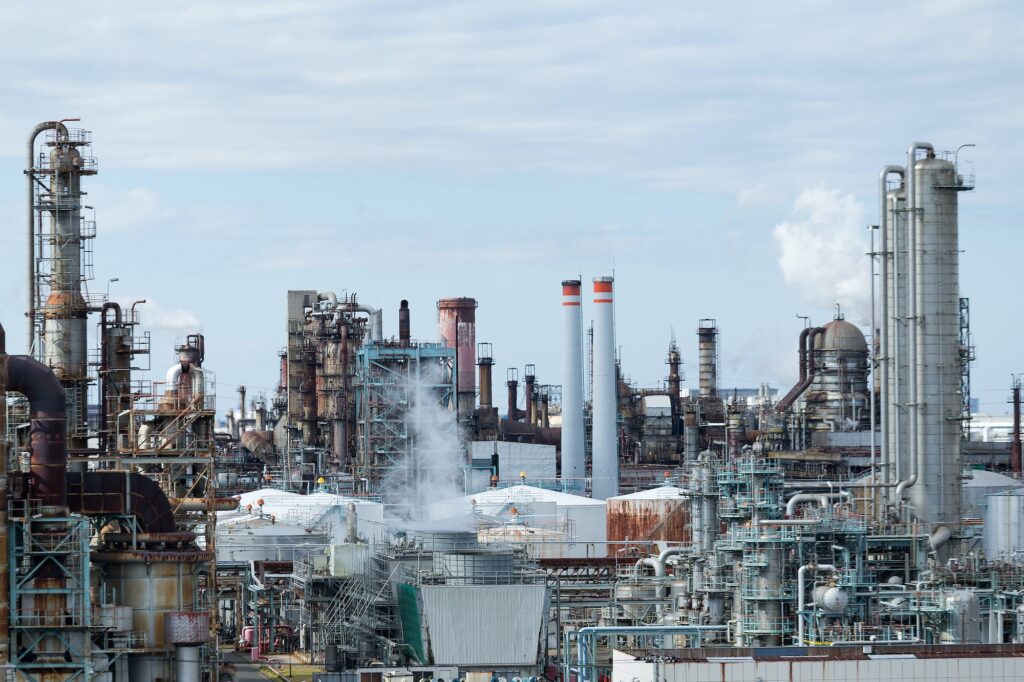Geological and Geophysical
Quality-assured techniques and integrated services at our state-of-the art facilities.
Find comprehensive solutions for your natural resource exploration, development,
and production challenges with a full scope of geoscience data, knowledge, and capabilities.
Find comprehensive solutions for your natural resource exploration, development,
and production challenges with a full scope of geoscience data, knowledge, and capabilities.
Reservoir Characterization

Enhance understanding of reservoir behavior
Increase your chances of success while screening new prospects, identifying potential drilling hazards, evaluating mature fields, or looking for the best location to place your next well. Our integrated reservoir characterization services incorporate well geological, engineering, and seismic data for a detailed and succinct understanding of the subsurface.
Get an integrated approach to reservoir characterization for:
♦ Shortened project timelines, helping to accelerate decision-making.
♦ Simplified contracting processes.
♦ Maximized knowledge transfer between disciplines.
♦ The best possible answer from all available data.
♦ Shortened project timelines, helping to accelerate decision-making.
♦ Simplified contracting processes.
♦ Maximized knowledge transfer between disciplines.
♦ The best possible answer from all available data.
Seismic Workflow:
We integrate our seismic expertise into tailored reservoir characterization projects, including:
♦ Reservoir-focused seismic enhancement.
♦ AVO analysis.
♦ Seismic inversion.
♦ Seismic attribute analysis.
♦ Seismic pore pressure prediction.
♦ Seismic lithology and facies classification.
♦ Seismic interpretation.
♦ Seismic sequence stratigraphy.
♦ Reservoir-focused seismic enhancement.
♦ AVO analysis.
♦ Seismic inversion.
♦ Seismic attribute analysis.
♦ Seismic pore pressure prediction.
♦ Seismic lithology and facies classification.
♦ Seismic interpretation.
♦ Seismic sequence stratigraphy.
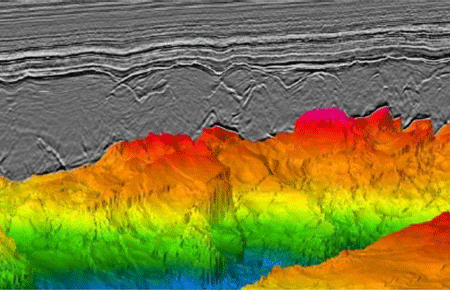

Geological Workflow:
Using our wide-ranging technology and expertise in clastic and carbonate sedimentology, formation evaluation, and reservoir quality characterization and predictability, we adopt integrated geological problem solving across a range of disciplines to reduce uncertainty. Our solutions cover a range of scales, from assessing micro- to macro-scale reservoir distribution and reservoir quality challenges in conventional and unconventional petroleum reservoirs, site characterization and de-risking, basin-scale source-to-sink studies, play fairway mapping, and conditioning of reservoir models. Our wide-ranging services include:
♦ Stratigraphy, including bio-, chemo-, and litho-stratigraphy.
♦ Fully integrated quantitative petrography services and integrated reservoir quality analysis of all sample types: core plugs, sidewall cores, outcrop samples, loose sediments, and cuttings.
♦ Single and multi-disciplinary studies; pore-to-seismic scale reservoir characterization.
♦ Clastic and carbonate sedimentology including detailed core description, facies analysis and mapping.
♦ High-resolution thin section imaging for digital thin section archiving and machine-learning (ML) led quantitative bulk mineralogy assessment, porosity analysis, and grain segmentation on newly acquired and legacy thin sections.
♦ Depositional and diagenetic models.
♦ Well log interpretation, petrophysical formation evaluation, electrofacies characterization and prediction, and well correlations.
♦ Integrated organic geochemistry: source rock screening, maturity analysis, and petroleum system/basin modeling.
♦ Stratigraphic forward modeling.
♦ Regional drainage analysis and provenance studies.
♦ Basin-to regional scale mapping (integrated mapping).
♦ Play fairway maps.
♦ Generation of accurate, standardized, and reproducible datasets and digitization of legacy data and geological data management.
♦ Stratigraphy, including bio-, chemo-, and litho-stratigraphy.
♦ Fully integrated quantitative petrography services and integrated reservoir quality analysis of all sample types: core plugs, sidewall cores, outcrop samples, loose sediments, and cuttings.
♦ Single and multi-disciplinary studies; pore-to-seismic scale reservoir characterization.
♦ Clastic and carbonate sedimentology including detailed core description, facies analysis and mapping.
♦ High-resolution thin section imaging for digital thin section archiving and machine-learning (ML) led quantitative bulk mineralogy assessment, porosity analysis, and grain segmentation on newly acquired and legacy thin sections.
♦ Depositional and diagenetic models.
♦ Well log interpretation, petrophysical formation evaluation, electrofacies characterization and prediction, and well correlations.
♦ Integrated organic geochemistry: source rock screening, maturity analysis, and petroleum system/basin modeling.
♦ Stratigraphic forward modeling.
♦ Regional drainage analysis and provenance studies.
♦ Basin-to regional scale mapping (integrated mapping).
♦ Play fairway maps.
♦ Generation of accurate, standardized, and reproducible datasets and digitization of legacy data and geological data management.
Petrophysical Workflow:
We integrate log, core/cuttings, and production data to obtain physical properties such as mineralogy, porosity, permeability, and fluid saturations. The goal is to assess accurate reservoir rock and fluid properties at well locations to be integrated with seismic data and its derivatives. Our services include:Get an integrated approach to reservoir characterization for:
♦ Petrophysical conditioning of log data.
♦ Formation description logs (FDLs).
♦ Reservoir rock-typing (RRT).
♦ Rock physics modeling.
♦ Petrophysical conditioning of log data.
♦ Formation description logs (FDLs).
♦ Reservoir rock-typing (RRT).
♦ Rock physics modeling.
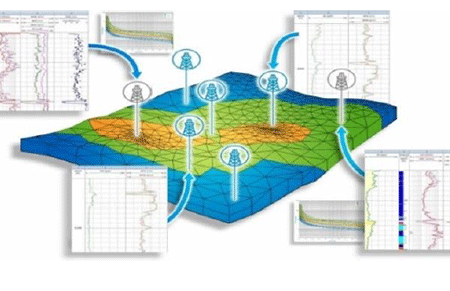
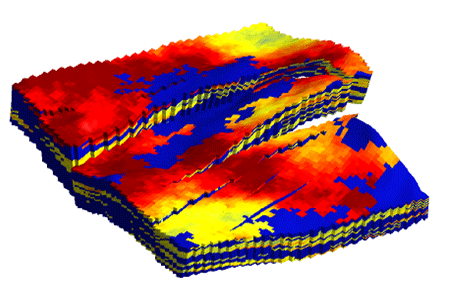
Geomodelling Workflow
Gas Subsea has enormous experience in building integrated geological static reservoir models for dynamic flow simulation. Access to state-of-the-art reservoir imaging, geological and petrophysical workflows complements our capabilities in model-building and flow simulation. Our services include:
♦ Static modeling.
♦ Dynamic modeling.
♦ Simulation.
♦ Production profile prediction.
♦ History matching covering black oil, heavy oil, gas condensate and gas fields.
♦ All reservoir types: clastic, carbonate and fractured reservoirs.
♦ Static modeling.
♦ Dynamic modeling.
♦ Simulation.
♦ Production profile prediction.
♦ History matching covering black oil, heavy oil, gas condensate and gas fields.
♦ All reservoir types: clastic, carbonate and fractured reservoirs.
Leads and Prospects Generation:
Gas Subsea has global experience performing prospectivity studies at all scales, from frontier areas to mature basins.

Play fairway analysis to evaluate charge, reservoir and seal:
♦ Play fairway analysis to evaluate charge, reservoir and seal:
This work begins with in-depth geochemistry and petroleum systems analysis, reservoir stratigraphy and sedimentology, and seismic interpretation and structural interpretation. A Gas Subsea prospectivity study can also leverage global database insights on paleogeography, paleoclimate, and geological analogues, integrating available multi-physics data, regional geological information, post well analysis, geological analogues, and regional statistical data. The play analysis is then brought together through play component mapping, Composite Common Risk Segment (CCRS) mapping, play chance calculations and yet-to-find estimation, creating a compelling picture of the play risks and the location of exploration “sweet spots”.
♦ Block evaluation:
We build a ranked portfolio, based on value, of identified leads and prospects, integrated with complementary methods such as sequence stratigraphy, sedimentology, structural restoration, fault seal analysis, seismic attribute and inversion, and petroleum systems modeling, to support future business decisions. This evaluation provides a complete volume and risk assessment for each opportunity that highlights the key risks, uncertainties, and sensitivities.
This work begins with in-depth geochemistry and petroleum systems analysis, reservoir stratigraphy and sedimentology, and seismic interpretation and structural interpretation. A Gas Subsea prospectivity study can also leverage global database insights on paleogeography, paleoclimate, and geological analogues, integrating available multi-physics data, regional geological information, post well analysis, geological analogues, and regional statistical data. The play analysis is then brought together through play component mapping, Composite Common Risk Segment (CCRS) mapping, play chance calculations and yet-to-find estimation, creating a compelling picture of the play risks and the location of exploration “sweet spots”.
♦ Block evaluation:
We build a ranked portfolio, based on value, of identified leads and prospects, integrated with complementary methods such as sequence stratigraphy, sedimentology, structural restoration, fault seal analysis, seismic attribute and inversion, and petroleum systems modeling, to support future business decisions. This evaluation provides a complete volume and risk assessment for each opportunity that highlights the key risks, uncertainties, and sensitivities.
Field Development & Production Optimization Services
Static Model Building:
Gas Subsea’s specialist geomodelling department is supported by world-class seismic, sedimentological, stratigraphic, GIS mapping, petrophysical and reservoir engineering personnel. The geological model is the place where all these data are integrated and made sense of. We focus on providing clients with the big picture based on quality inputs, while all the time keeping a strong focus on their ultimate aims. Our geological models are used as the basis for dynamic reservoir simulations and fully independent FDPs (field development plans) and advice. Our experienced economics department can advise on FDP optimization, asset value and financial risk.
The main components of our static model building workflow and methodology are:
♦ Data loading, expert QC, and analysis.
♦ Integration of regional, sedimentological, diagenetic, petrophysical and reservoir architectural understanding.
♦ Incorporation of sedimentological, seismic, petrophysical and reservoir engineering data.
♦ Structural modeling.
♦ Facies and reservoir property modeling.
♦ Saturation modeling and QC.
♦ Volumetric determinations and uncertainty analysis.
♦ Migration-to-reservoir simulator and initialization support.
♦ Data loading, expert QC, and analysis.
♦ Integration of regional, sedimentological, diagenetic, petrophysical and reservoir architectural understanding.
♦ Incorporation of sedimentological, seismic, petrophysical and reservoir engineering data.
♦ Structural modeling.
♦ Facies and reservoir property modeling.
♦ Saturation modeling and QC.
♦ Volumetric determinations and uncertainty analysis.
♦ Migration-to-reservoir simulator and initialization support.
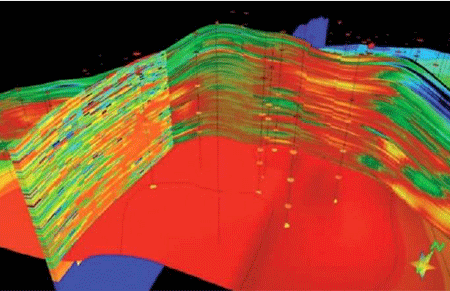

Classical Reservoir Engineering
Classical Reservoir Engineering
Gas Subsea’s Reservoir Sciences group is well versed with use of analytical reservoir engineering techniques and puts special emphasis on harnessing the results from analytical methods with static and dynamic modeling workflows. Our experts utilize industry-accepted software and in-house analytical tools to conduct their analyses. At GAS SUBSEA, we appreciate that each reservoir has unique issues, so our experts use tailored workflows to address these and meet our clients’ needs.
Dynamic Modeling:
Gas Subsea has the capability to simulate very large, high-resolution dynamic models with fine grids utilizing workflows tailored for assets at different stages of the E&P life cycle. Our experts use the industry-standard commercial simulation platforms and have global experience in dynamic modeling of complex carbonate and clastic reservoirs with a variety of reservoir fluids. They can recommend optimized field development plans under primary, secondary, and tertiary recovery schemes. Gas Subsea also utilizes a new proprietary ensemble-based history-matching workflow to condition static models to production data so that they are more detailed and realistic, and to refine history-matching results.

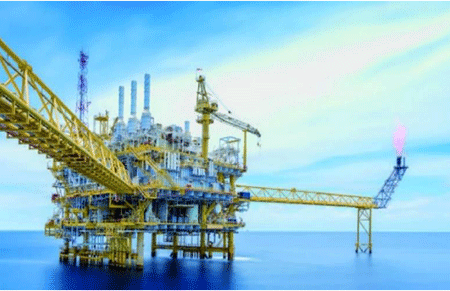
Surface Modeling & Economics
Once the dynamic reservoir properties have been generated, Gas Subsea can now conduct well- and field-level optimization studies to help clients select the best interface between reservoir and surface facility. Key components of this solution will be:
♦ Completion design.
♦ Artificial lift design and optimization.
♦ Flow assurance.
♦ Metallurgy selection.
♦ Corrosion assessment.
♦ Well performance (vertical lift curves).
♦ Production system flow.
♦ Pipeline geometry.
♦ Separator pressures.
♦ System constraints and GAP analysis.
♦ Completion design.
♦ Artificial lift design and optimization.
♦ Flow assurance.
♦ Metallurgy selection.
♦ Corrosion assessment.
♦ Well performance (vertical lift curves).
♦ Production system flow.
♦ Pipeline geometry.
♦ Separator pressures.
♦ System constraints and GAP analysis.
After the production forecasts have been generated, cost profiles are created for operating costs (OPEX) and capital costs (CAPEX) as well as abandonment costs. The project can be optimized for the commercial terms and product prices:
♦ Modeling of fiscal terms and the creation of an economics model.
♦ Economics model outputs will be cash flow, NPV, rate of return,
EMVs (for exploration and prospects) and other metrics as required.
♦ Analysis of the economics model outputs to select the optimum development scenario.
♦ Modeling of fiscal terms and the creation of an economics model.
♦ Economics model outputs will be cash flow, NPV, rate of return,
EMVs (for exploration and prospects) and other metrics as required.
♦ Analysis of the economics model outputs to select the optimum development scenario.
Assessing mechanical properties
Surface Modeling & Economics
Get greater insight into the key role of geomechanical effects across the development and production cycle. Coupled reservoir-geomechanical simulation and specialist studies include:
♦ Wellbore and casing integrity analysis.
♦ 1D and 3D Pore Pressure Prediction (PPP) and Mechanical Earth Model (MEM) studies.
♦ Full field compaction/subsidence and heavy modeling.
♦Waterflood, PWRI, CRI EOR and waste injection modeling.
Fault reactivation modeling.
♦Sand production and cavity propagation modeling.
♦Numerical and analytical PTA/RTA and mini-frac analysis.
Applications for specific scenarios include:
♦Thermal projects from heavy oil SAGD production to CCS injection.
♦Tar sand heavy oil surface heave, caprock integrity and MOP.
♦Injection into soft/unconsolidated reservoirs.
♦Naturally fractured reservoir development.
♦Shale plays and tight formation well completion, stimulation and interference.
♦Geothermal resource development.
♦CCS injection and storage.
♦Integration of multi-disciplinary data, including reservoir simulation, 4D seismic, seismic attribute extractions, structure model, and production data.
♦ Wellbore and casing integrity analysis.
♦ 1D and 3D Pore Pressure Prediction (PPP) and Mechanical Earth Model (MEM) studies.
♦ Full field compaction/subsidence and heavy modeling.
♦Waterflood, PWRI, CRI EOR and waste injection modeling.
Fault reactivation modeling.
♦Sand production and cavity propagation modeling.
♦Numerical and analytical PTA/RTA and mini-frac analysis.
Applications for specific scenarios include:
♦Thermal projects from heavy oil SAGD production to CCS injection.
♦Tar sand heavy oil surface heave, caprock integrity and MOP.
♦Injection into soft/unconsolidated reservoirs.
♦Naturally fractured reservoir development.
♦Shale plays and tight formation well completion, stimulation and interference.
♦Geothermal resource development.
♦CCS injection and storage.
♦Integration of multi-disciplinary data, including reservoir simulation, 4D seismic, seismic attribute extractions, structure model, and production data.
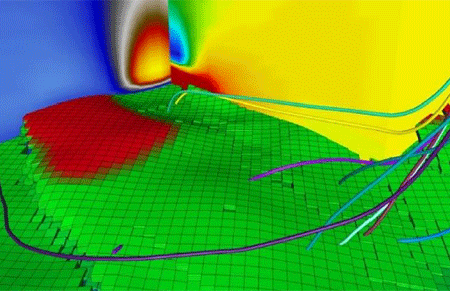
Geoscience digitalization Services
GAS SUBSEA has expertise in migrating multi-discipline data from third-party databases into a common platform which can be accessed by other technical consultants. This is important if project data is locked away in inaccessible third-party databases.
By accessing and bringing datasets together, a wide range of experts can become aware of all data held for a project from a range of disciplines. This has the key benefit of promoting inter-disciplinary collaboration and an overview of data for more informed decision-making and project management.
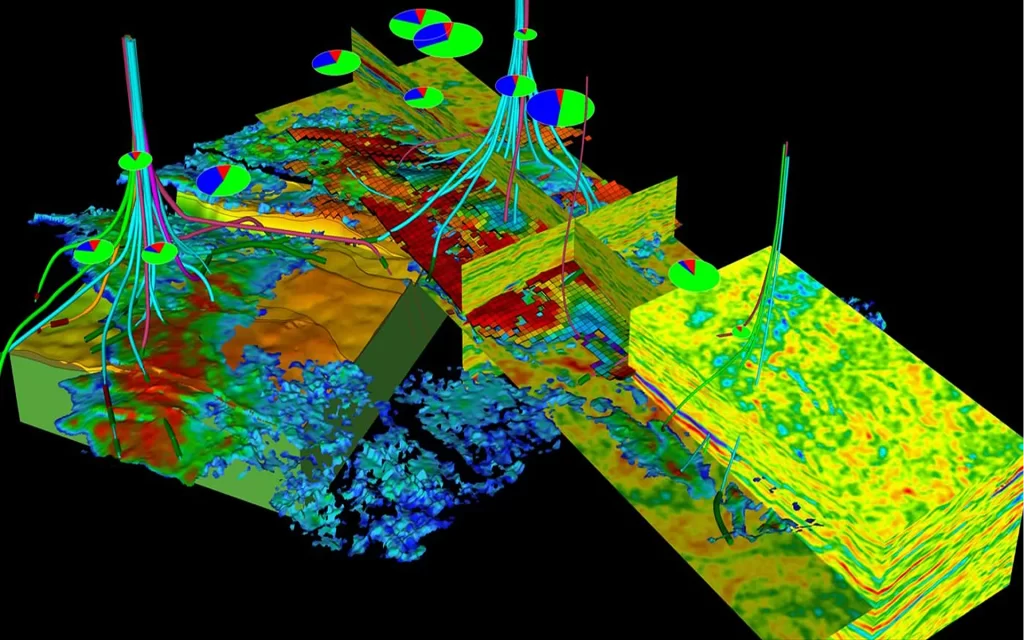
Data Management Services:
♦ Inter-disciplinary data awareness.
♦ Migrate inaccessible data.
♦ Promote Inter-Discipline Collaboration.
♦ Improve complex problem-solving.
♦ Hold multi-discipline data set in one.
♦ accessible platform.
♦ Improve Decision making and planning.
♦ Expand expert input into problem solving.
♦ Migrate inaccessible data.
♦ Promote Inter-Discipline Collaboration.
♦ Improve complex problem-solving.
♦ Hold multi-discipline data set in one.
♦ accessible platform.
♦ Improve Decision making and planning.
♦ Expand expert input into problem solving.
Seismic Data Vectorization:
Seismic vectorizing quality varies widely across the industry. Although some vectorized SEG-Y files may initially appear acceptable, they will often be missing much of the underlying data. Gas Subsea’s SEG-Y output derives from newly developed vectorizing software with several new techniques.
♦ We use image editing software specifically designed for large images and can consolidate multiple seismic images into one section.
♦ Image markings or hand-drawn interpretation are edited out before capturing the underlying seismic.
♦ Shot point and CMP data is recorded.
♦ Extra EBCDIC information is typed from the label (if it exists).
♦ Our software predicts the invisible positive overlap of the peaks and tracks the negative trough wiggle lines.
♦ Each trace is bandpass filtered (outside the original frequency range) and amplitude balanced across the whole trace.
♦ Navigation information can be added to the SEG-Y files for easier loading.
♦ We use image editing software specifically designed for large images and can consolidate multiple seismic images into one section.
♦ Image markings or hand-drawn interpretation are edited out before capturing the underlying seismic.
♦ Shot point and CMP data is recorded.
♦ Extra EBCDIC information is typed from the label (if it exists).
♦ Our software predicts the invisible positive overlap of the peaks and tracks the negative trough wiggle lines.
♦ Each trace is bandpass filtered (outside the original frequency range) and amplitude balanced across the whole trace.
♦ Navigation information can be added to the SEG-Y files for easier loading.
Seismic Displays:
♦ Most colour sections can be accurately digitized to SEG-Y. Common examples of this display type include greyscale, black-red and blue-red.
♦Gas Subsea offers high quality seismic reconstruction to SEG-Y from most image sources: photographs, desktop A4 scanned images, computer screen-captured images, data room images, CGM, JPEG, PNG image files etc., all the way up to high resolution large scale seismic hardcopy or plots. Seismic type displays such as Vertical Seismic Profiles (VSPs), EPC and ocean bottom surveys can also be digitized.
♦Gas Subsea offers high quality seismic reconstruction to SEG-Y from most image sources: photographs, desktop A4 scanned images, computer screen-captured images, data room images, CGM, JPEG, PNG image files etc., all the way up to high resolution large scale seismic hardcopy or plots. Seismic type displays such as Vertical Seismic Profiles (VSPs), EPC and ocean bottom surveys can also be digitized.
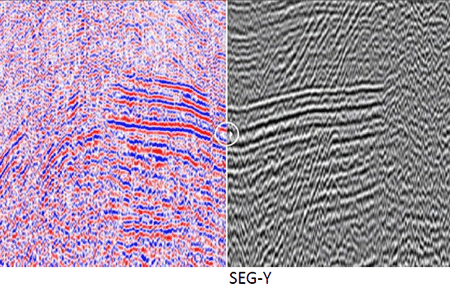

Interpretation Removal:
♦An extensively interpreted seismic image converted to SEGY using our Fill Interpolation Filter.
♦ Interpretation normally persists in screenshot image capture, but with Fill Interpolation we can remove it from the SEGY.
♦ Interpretation normally persists in screenshot image capture, but with Fill Interpolation we can remove it from the SEGY.
Image Recovery:
Most clean-up work is included within the seismic vectorization process. However, in some cases seismic sections may be extensively marked or have significant drawing interpretation over them. If that is the case, extra time may be required to clean these images before digitizing.
The final seismic reconstruction is promptly returned inside oil and gas industry.
standard SEG-Y format files, accompanied with a comprehensive report spreadsheet.
The final seismic reconstruction is promptly returned inside oil and gas industry.
standard SEG-Y format files, accompanied with a comprehensive report spreadsheet.

Seismic Displays:
♦Most colour sections can be accurately digitized to SEG-Y. Common examples of this display type include greyscale, black-red and blue-red.
♦Gas Subsea offers high quality seismic reconstruction to SEG-Y from most image sources: photographs, desktop A4 scanned images, computer screen-captured images, data room images, CGM, JPEG, PNG image files etc., all the way up to high resolution large scale seismic hardcopy or plots. Seismic type displays such as Vertical Seismic Profiles (VSPs), EPC and ocean bottom surveys can also be digitized.
♦Gas Subsea offers high quality seismic reconstruction to SEG-Y from most image sources: photographs, desktop A4 scanned images, computer screen-captured images, data room images, CGM, JPEG, PNG image files etc., all the way up to high resolution large scale seismic hardcopy or plots. Seismic type displays such as Vertical Seismic Profiles (VSPs), EPC and ocean bottom surveys can also be digitized.

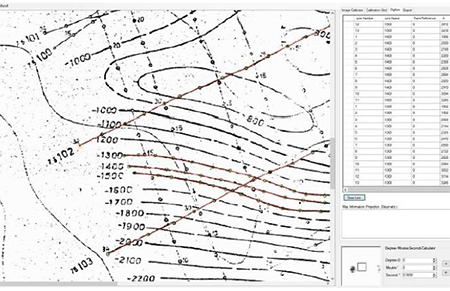
Map Digitizing:
Should digital navigation data not already exist, it can be captured from base-map images. We use a leading map digitizing package which enables us to capture this information and convert it between all common projection systems. Shot-points, wells, contours, boundaries, and faults etc. can all be captured. Similarly, we can capture elevation information from seismic sections and load it into the vectorized SEG-Y trace headers.
Wellsite Services
Advanced expertise available at the wellsite
Real-time wellsite support for geosteering, geostopping and geomapping-while-drilling. We support the life cycle of your drilling project with:
♦Highly experienced wellsite technicians, biostratigraphers and sedimentologists.
♦Logistics and planning for mobile wellsite onshore/offshore laboratories and equipment.
♦Post-drill integrated expertise from finite-scale scanning electron microscopy to basin-scale regional seismic evaluation.
Supported by our leading thin section & microscopy laboratories, our multi-disciplinary laboratory teams take the laboratory to wellsite, supporting geoscientists with integrated, tailored techniques:
♦ Wellsite biostratigraphy.
♦ Wellsite micropaleontology.
♦Injection into soft/unconsolidated reservirs.
♦ Wellsite nannopaleontology.
♦Wellsite palynology (acid & enhanced non-acid).
♦ Wellsite reservoir petrography.
♦ Wellsite lithostratigraphy.
♦ Wellsite elemental chemostratigraphy (XRF)
♦Highly experienced wellsite technicians, biostratigraphers and sedimentologists.
♦Logistics and planning for mobile wellsite onshore/offshore laboratories and equipment.
♦Post-drill integrated expertise from finite-scale scanning electron microscopy to basin-scale regional seismic evaluation.
Supported by our leading thin section & microscopy laboratories, our multi-disciplinary laboratory teams take the laboratory to wellsite, supporting geoscientists with integrated, tailored techniques:
♦ Wellsite biostratigraphy.
♦ Wellsite micropaleontology.
♦Injection into soft/unconsolidated reservirs.
♦ Wellsite nannopaleontology.
♦Wellsite palynology (acid & enhanced non-acid).
♦ Wellsite reservoir petrography.
♦ Wellsite lithostratigraphy.
♦ Wellsite elemental chemostratigraphy (XRF)
